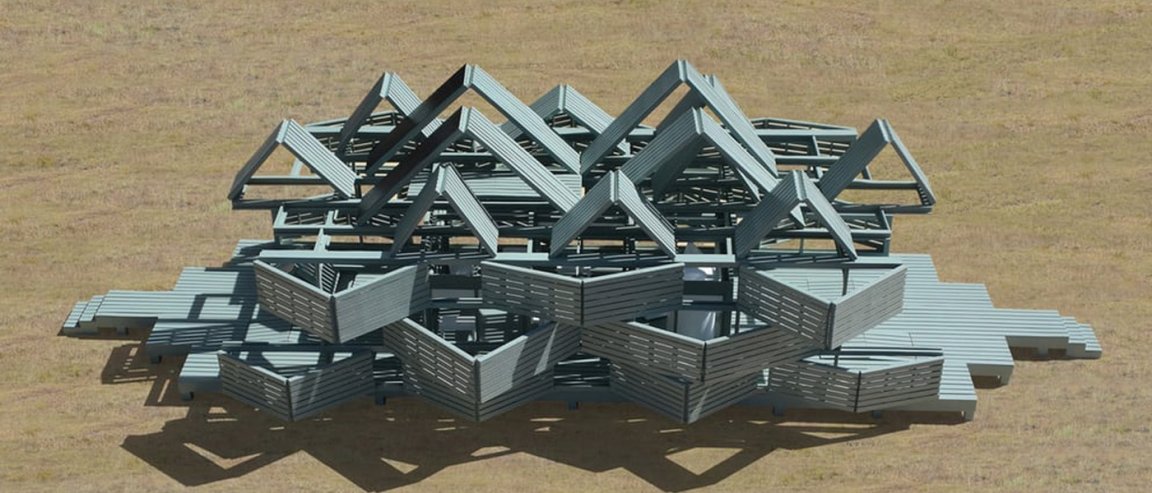
Weather-Responsive Housing
Imagine that you’re lounging on your vacation home’s deck—when suddenly, the clouds move and there’s the sun glaring at you. You activate the home’s robotic mechanism to move the roof panels to give you shade…what?!
The Malleable Autonomous Retreat House is a conceptual box-like building made of hinged slotted panels that unfold and extend at the dweller’s will. It’s envisioned by Michael Jantzen, who describes himself as “an artist and inventor who often uses architecture as an art form.”
“Whenever all of the panels are closed (or in the flat position) the house retains a simple rectangular form,” explains Jantzen. “In this position, the space under the canopy is entirely shaded, and blocks most of the wind. As the hinged panels are opened to any degree, the shape of the house begins to change into a totally unpredictable form, which can be based on the desired climatic conditions under the canopy, and/or just aesthetic preferences.” He also mentions that the home would generate power exclusively from solar panels.

Welcome To A Newer Home
Jantzen’s weather-responsive dwelling isn’t the first of the so-called “smart homes” in development. Already, developments in construction and materials science are building up an exciting picture of futuristic homes.
3-D printing is the new frontier, making available nearly every customization for intricate designs and specific properties. Some companies 3-D print homes so fast that construction start and moving in can happen in just a day. Cities with housing crises have used 3-D printed homing to provide for low-income families.
Others are thinking even bigger: Samsung SmartThings imagines the future home to come with an app that can change the appearance of walls and floors made of “malleable skin” embedded with sensors and actuators. The Defense Advanced Research Projects Agency is working with tech that could soon allow them to ‘grow’ homes capable of repairing themselves.
High-tech living is truly on its way to every home.